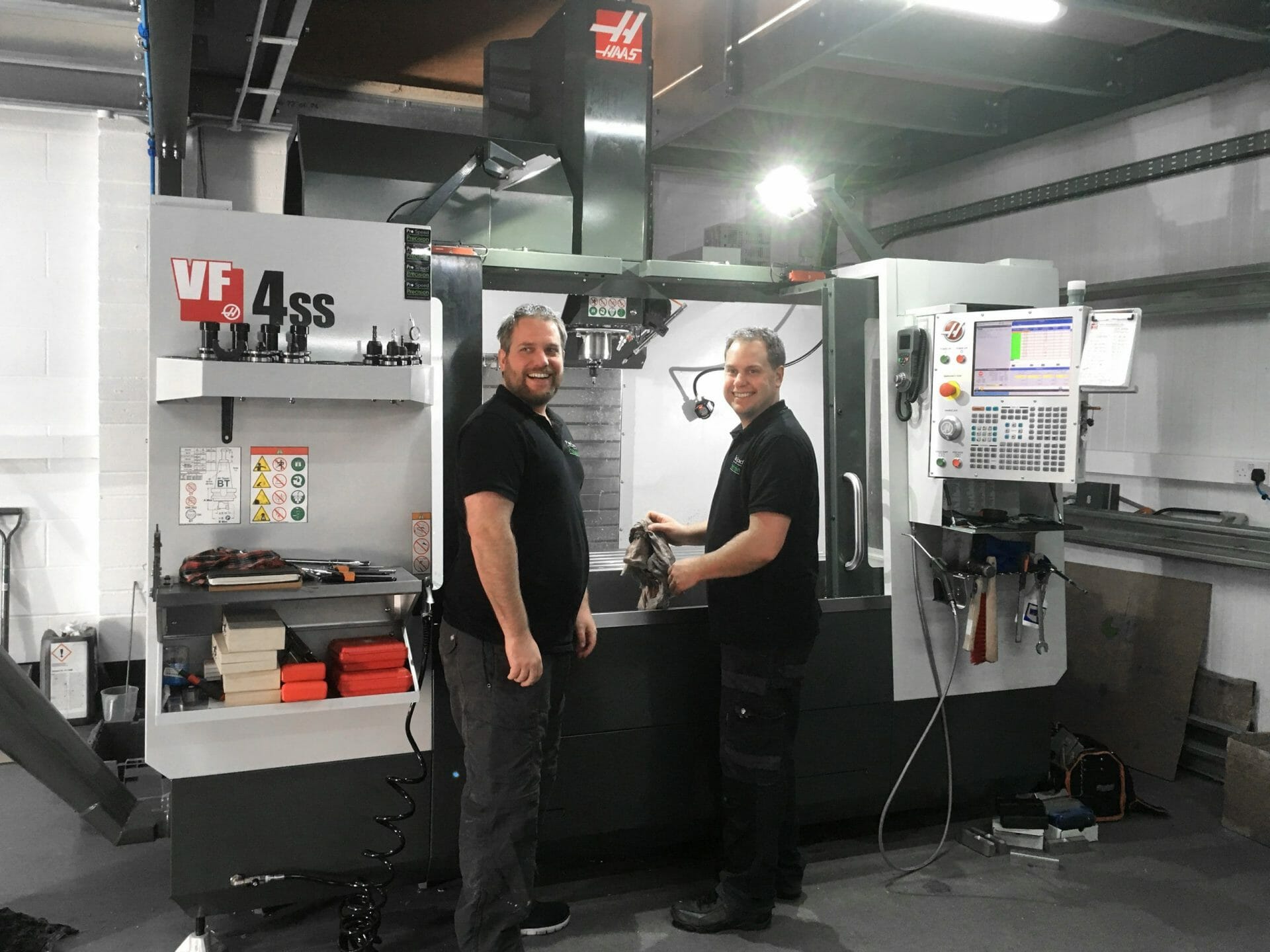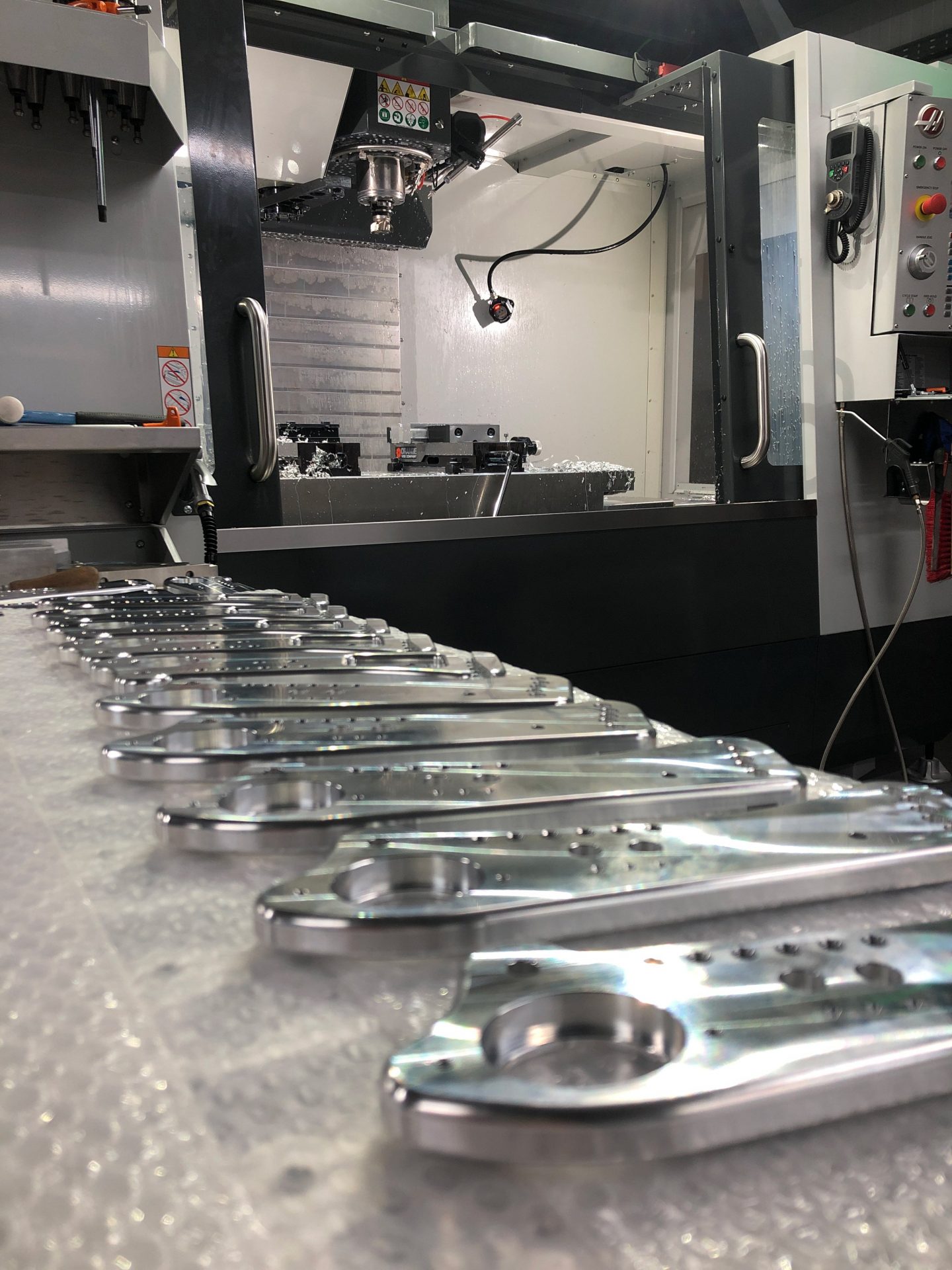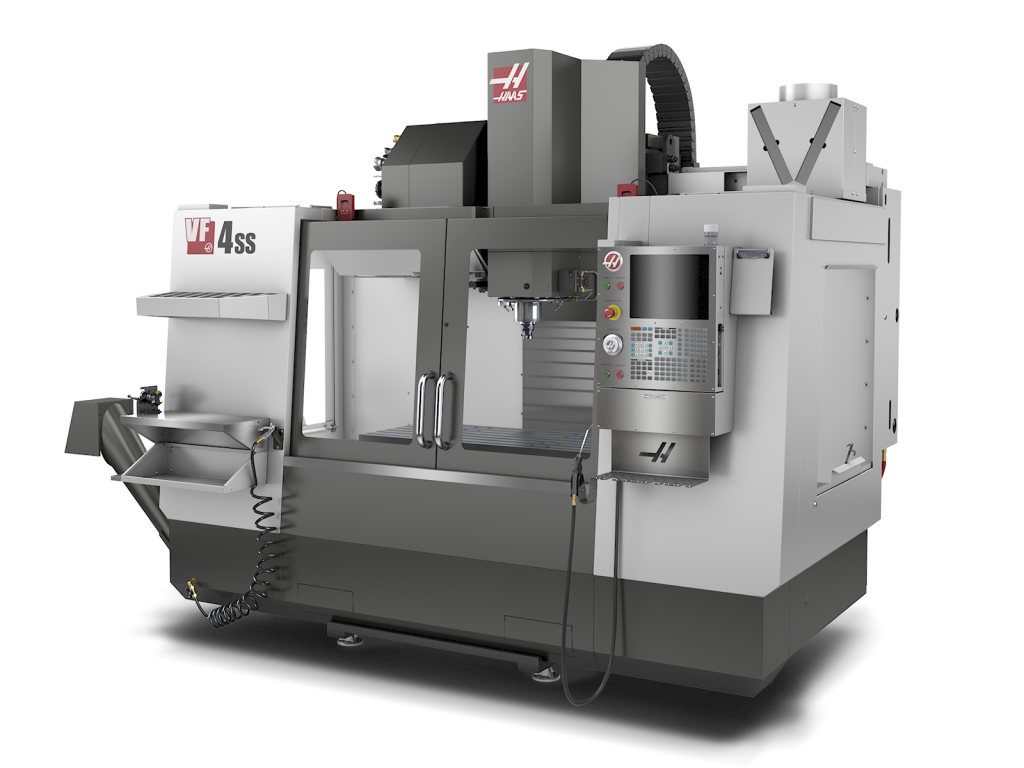ProSpeed Precision
Running a business their own way had always been the dream for brothers Ben and Matt Wesley and in 2018 they founded ProSpeed Precision. Their sub-contract machining company specialises in reverse engineering; taking on the complex jobs that other engineers typically shy away from.
Ben started his career as a toolmaker, before training on CNC machines. Matt had just returned from working at BAE in the Middle East. After registering the name ProSpeed Precision, they organised funding, looked for suitable premises and finalised their CNC needs by visiting the Haas stand at the MACH 2018 exhibition in Birmingham.
Six weeks after buying a brand new factory in Ramsgate, Kent, the brothers invested in a Haas VF-4SS Super-Speed vertical machining centre. The VF-4SS has a 12,000-rpm spindle and is equipped with 30+1 high-speed side mount tool changer. The brothers opted to add through spindle coolant and high-speed machining software option for greater versatility. “We wanted the very latest machine on the market,” explains Ben. “Something state of the art, with a full set of features. We needed to future proof our business as much as possible and the Haas mill fitted the bill.”

ProSpeed now have over a dozen customers on their books from their first three months of trading; ranging from motorsport to manufacturing and fabrications. All work from design to completion is carried out in-house, with CAD/CAM software of choice being Fusion 360.
With both brothers still holding down full-time jobs elsewhere, time is of a premium. “We’re focusing on making the parts other companies find too difficult,” says Ben. “We recently did a job for some machines that recycle copper cables. We did the plate work and blade holders; there were some very complex compound angles involved.

Parts above machined on ProSpeed Precision’s VF-4SS for Simmonds Engineering
“I’ve worked on Haas machines for over ten years; they were the only brand I wanted in our workshop. I thought I knew them inside out but even I was surprised by how far they’ve developed in that time. The rigidity and accuracy keeps us well within tolerances and the tool change speed on our new machine is fantastic. The Next Generation control user-friendly and has some brilliant time-saving features.
“I’d dealt with our area’s Haas salesman before and he is superb. The service is also impressive; I recently had a question about probing that I posted on an American Facebook page. Our local engineer, Russell, noticed the question and popped in to help me fix it. You can’t get better service than that.”
“I recently had a question about probing that I posted on an American Facebook page. Our local engineer, Russell, noticed the question and popped in to help me fix it. You can’t get better service than that.”
Ben Wesley – ProSpeed Precision





